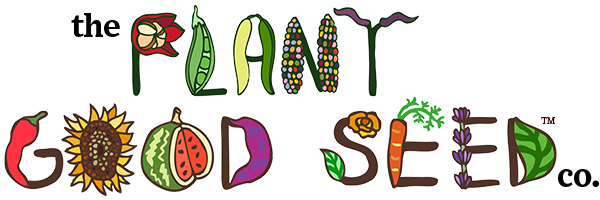
German Chamomile (Matricaria chamomilla) is the classic variety so commonly found in tea blends and attractive to beneficial pollinators of all kinds. A very easy to grow plant that’s not picky about soil and nutrient requirements; water it regularly and it makes a beautiful addition to any garden. Harvest blossoms by hand, or invest in a chamomile rake to make larger harvests more feasible. The leaves can also be used in tea. Plants easily reseeds following their early flowering period. Plant once and leave around and expect more the following year.
German Chamomile (Matricaria chamomilla) is the classic variety so commonly found in tea blends and attractive to beneficial pollinators of all kinds. A very easy to grow plant that’s not picky about soil and nutrient requirements; water it regularly and it makes a beautiful addition to any garden. Harvest blossoms by hand, or invest in a chamomile rake to make larger harvests more feasible. The leaves can also be used in tea. Plants easily reseeds following their early flowering period. Plant once and leave around and expect more the following year.
Chamomile (Matricaria chamomilla) prefers cooler weather, so is best started alongside other early season crops like peas and spring greens. Whether you are seeding in trays indoors or directly into the ground, scatter the tiny seed into the surface of the soil and gently pat in to establish good contact and keep the seed from blowing or washing away. The seeds require some light to germinate, and although warmer temperatures might speed up the process, they will also happily come up in cooler soils.
You don’t need to thin, as chamomile seedlings will clump up and grow fine in close quarters with one another. But if you do want to divide up a clump to get more plants, you may - their roots are not super sensitive (despite being quite thin). Just be gentle as you untangle them and be aware that the transplant will slow their growth.
Chamomile will survive even with lower-maintenance, and after establishment may not need constant watering if there happens to be even a modest amount of early summer rain. That said, its roots are fairly shallow, so observing the plant and making sure it has adequate water will provide higher yields. Results will absolutely vary with your soil type - in sandy, acidic soils I’ve seen chamomiles grow no taller than 10 inches; and I have also been knee deep in chamomiles almost 3’ tall, grown in a raised bed amended with some compost.
Flowers will arrive by early summer, and picking them once a week will not only provide you with tasty soothing tea, but will also contribute to more bloom production. The plants will start petering out with the arrival of hotter temperatures - flower production will slow and stalks will start turning yellow. Leave them to encourage self seeding for next season, or use the garden space to plant a quick growing warm season crop like beans.
In zone 7b I have had chamomile self seed over the winter, and the rosettes coming up in late February and early March successfully handled light late frosts and produced the nicest, lowest-maintenance chamomile patches I have ever grown - so depending on your USDA zone you could experiment with winter sowing in addition to hoping for self-seeding.
For the home apothecary of a small, chamomile-loving household, I’d recommend growing at least 3-5 plants.
-Goda
Collections: All Products Bulk Sizes Chamomile
We use cookies on our website to give you the very best shopping experience we can. By using this site, you agree to its use of cookies.
Emails every 4-6 weeks featuring compelling original gardening content, new variety announcements, sales, and event appearances.
